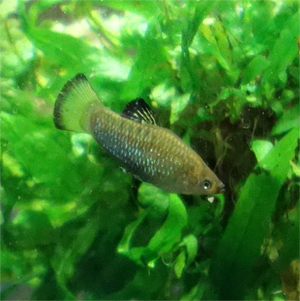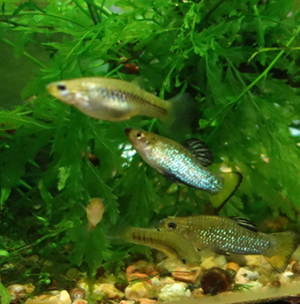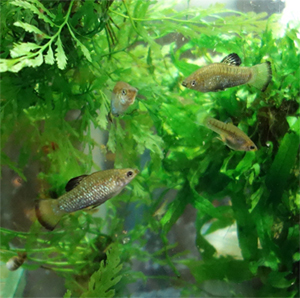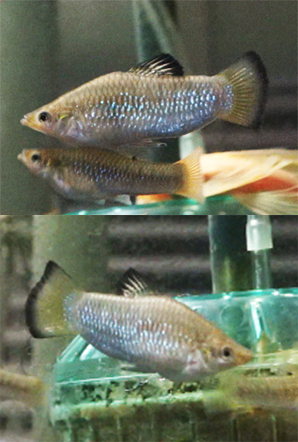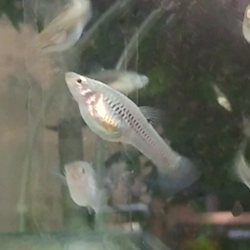|
This is a very special fish, and will need to
be maintained in a species only tank. These are not yet
available, but if you are interested in them, please email me,
and with only this fish, I will set up a
wait list
to get fish out as they become available.
Currently they must be supplied to select labs so that the
population can be maintained, and that should
be completed by October 1, 2018. At that point, orders of two
pairs should be available in limited
supply.
For those looking for an opportunity to personally affect the
existence of a population of a fish,
this is the fish. These I am carefully raising here are very
likely the last of this population of
this
fish in the world. If you do not wish to take optimum care
of this fish in a species only tank,
toward the effort to save this fish from extinction, then please
wait until they are in greater supply-
I do hope to offer these routinely for sale.
Here is why they may be gone, and how I came to
posses them.
This fish is possibly the most attractive population of Limia perugia that exists. When originally
collected, these fish were over 3 inches long, and covered in
bright blue spangles. Their size had
been reduced through years of being kept in laboratory
conditions, but I have been raising them here
on a variety of live and frozen foods, and I have been getting
them back to over 2 inches.
This fish was first collected by Dr. Alex Cruz, Dr. Pablo Weaver
and Nate Goldstein in 2003 from
the Dominican Republic, and maintained at Colorado University
until the retirement of Dr. Cruz
in 2013.
Rising lake levels of the hyper saline
Lake Enriquillo caused great losses of farms and
settlers along the lake, including the local freshwater springs
and canals, including the
areas where this fish existed. Other reports of damage to the
area by recent Hurricanes
has made further searches for this fish difficult. A collecting
trip is being planned for 2019
to see if this fish can still be found.
This population was maintained in a large,
shallow public wading area, with large amounts of
insects at the water surface, and had grown to become a
particularly brightly colored and large
sized fish, distinct from other Limia Perugia populations.
Dr. Cruz's fishroom was closed earlier this year, and I was contacted to
adopt this line from his
collection. I received about 40 fish. I am familiar with this
population, having been at the lab when
they
first arrived.
These are not difficult to keep, but they do require consistent
water quality with minimal
substrate, good filtration, aeration and live plants in a tank
of 29 gallons or larger. These
can be kept alive on dry foods, but to reproduce and grow at
best color they should be fed
live or frozen baby brine shrimp, in combination with other
types of frozen and live foods,
supplemented by a quality dry food. Live or Frozen Daphnia is
particularly preferred.
Consistent water quality through routine, consistent water
changes is essential.
When healthy and doing well they can be quite prolific,
releasing 10-25 fry after a
30 day gestation.
The Care Page on this species for more
information can be seen
HERE.
Back To Previous
Species
To Next Species
|
 |
